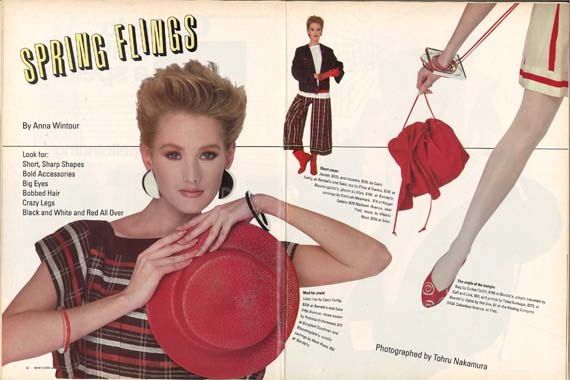The 1980s marked a significant era in the world of fashion, characterized by bold styles, innovative designs, and an explosion of creativity. Central to this cultural phenomenon were the iconic fashion fashionsmag.co.uk/ magazines of the time, which played a pivotal role in shaping trends, influencing consumer behavior, and reflecting the spirit of the era.
Iconic Fashion Trends
One of the defining features of 80s fashion was the concept of power dressing. Women embraced structured silhouettes, shoulder pads, and tailored suits, symbolizing strength and empowerment in the workplace. Meanwhile, vibrant neon colors and bold patterns became synonymous with the era, reflecting a sense of optimism and confidence. Additionally, the influence of punk and new wave subcultures brought an edgy aesthetic to mainstream fashion, with leather jackets, ripped denim, and unconventional hairstyles making a bold statement.
Leading 80s Fashion Magazines
Amidst this sartorial revolution, several fashion magazines emerged as cultural powerhouses, setting the agenda for style and sophistication. Vogue, with its unparalleled editorial content and high-fashion spreads, became the ultimate arbiter of taste and elegance. Elle, known for its accessible yet aspirational approach to fashion, catered to a diverse audience seeking inspiration and advice. Harper’s Bazaar, with its blend of avant-garde fashion and cutting-edge photography, captured the essence of the era’s glamour and excess.
Fashion Icons and Models
The 80s also witnessed the rise of supermodels who transcended the runway to become global icons of style and beauty. Figures like Cindy Crawford, Naomi Campbell, and Linda Evangelista graced the covers of magazines, epitomizing the era’s aesthetic and attitude. Moreover, celebrities from film, music, and television became influential trendsetters, shaping public perception of fashion and beauty.
Editorial Content and Layout
In addition to showcasing the latest trends and collections, 80s fashion magazines offered a diverse range of editorial content to engage and inspire readers. Fashion editorials featured elaborate photo shoots set in exotic locations, showcasing haute couture garments and avant-garde styling. Beauty sections provided readers with tips and tutorials on makeup application, skincare routines, and hair styling techniques. Furthermore, interviews with renowned designers, industry insiders, and cultural icons offered valuable insights into the creative process and the zeitgeist of the time.
Legacy and Impact
Despite the passage of time, the legacy of 80s fashion magazines continues to resonate in the world of fashion and beyond. Many of the trends and styles popularized during that era have experienced a resurgence in recent years, reaffirming the enduring influence of 80s fashion on contemporary aesthetics. Moreover, the democratization of fashion through digital media has ensured that the spirit of innovation and creativity championed by 80s fashion magazines remains alive and well in the digital age.
Conclusion
In conclusion, the 80s were a transformative period in the history of fashion, characterized by bold experimentation, cultural diversity, and artistic expression. At the heart of this revolution were the iconic fashion magazines of the era, which served as beacons of inspiration and arbiters of style. Through their innovative editorial content, groundbreaking photography, and visionary leadership, these magazines not only chronicled the fashion zeitgeist but also helped to shape it, leaving an indelible mark on the world of fashion and popular culture.

